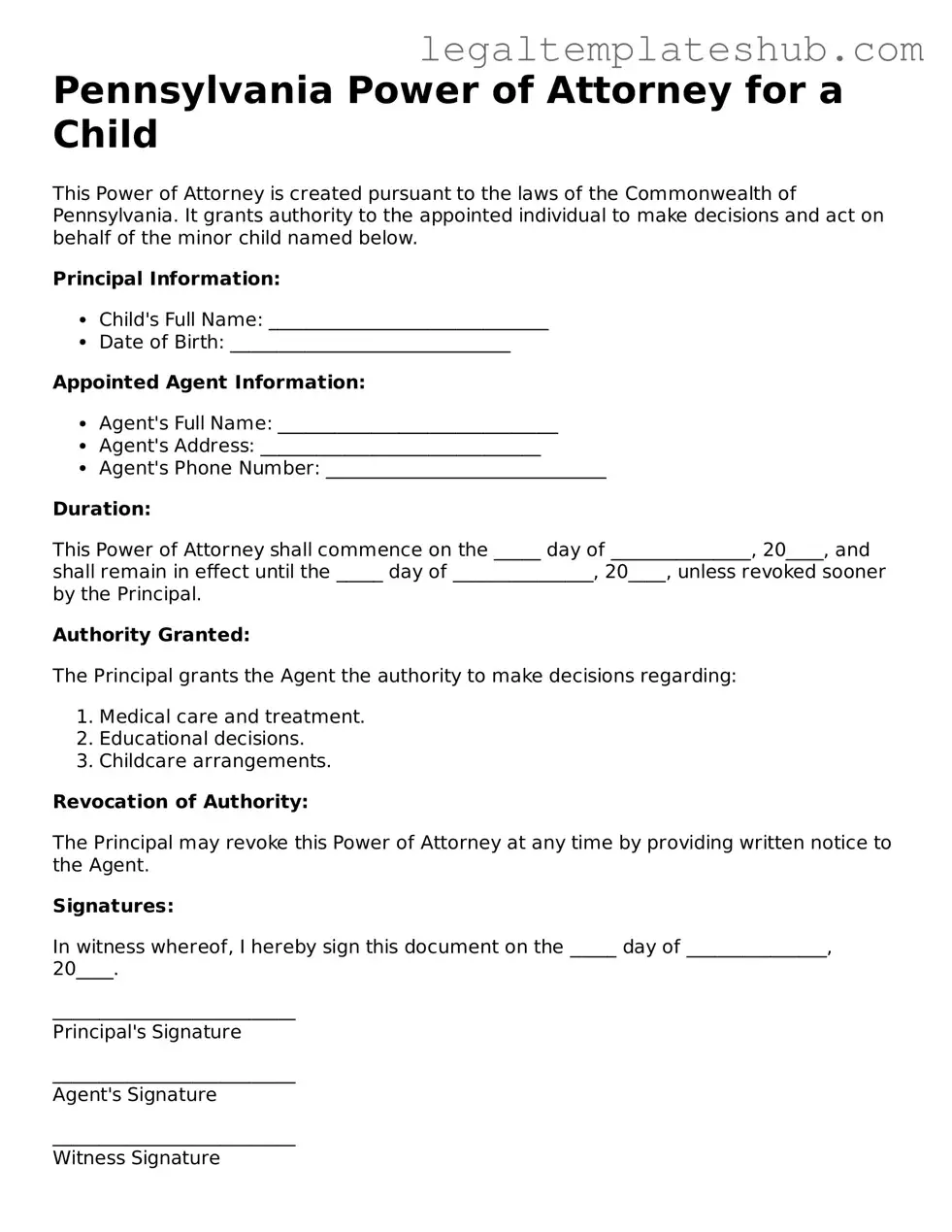Printable Power of Attorney for a Child Document for Pennsylvania
The Pennsylvania Power of Attorney for a Child form is a legal document that allows a parent or guardian to grant temporary authority to another individual to make decisions on behalf of their child. This form is particularly useful in situations where the parent is unavailable, such as during travel or medical emergencies. Understanding how to properly complete this form is essential for ensuring the child's well-being and legal protection.
To get started on filling out the form, click the button below.
Access Editor
